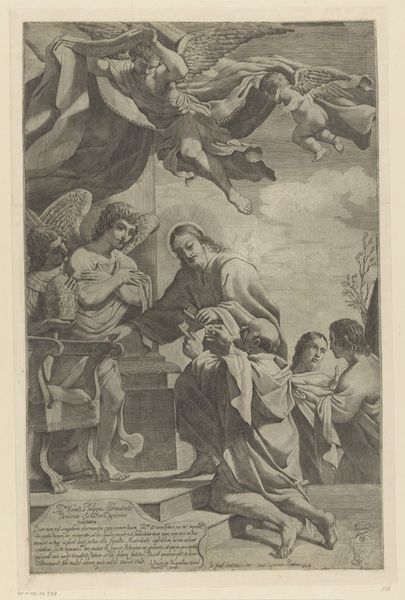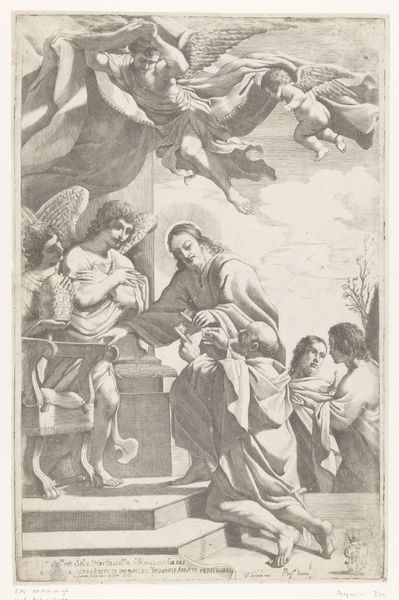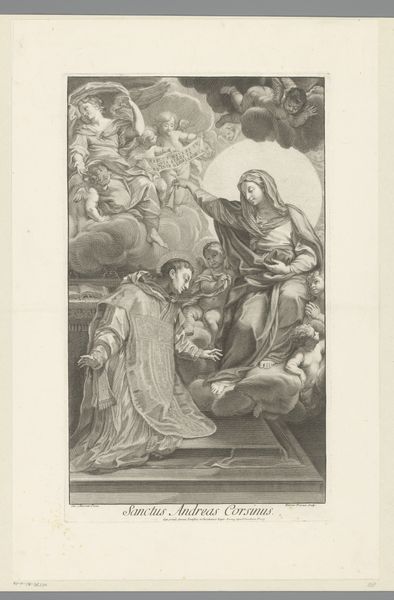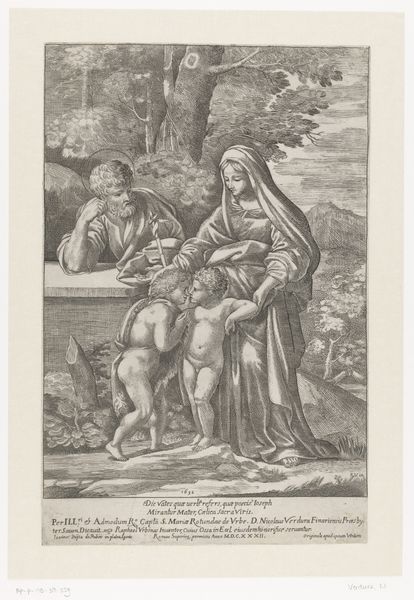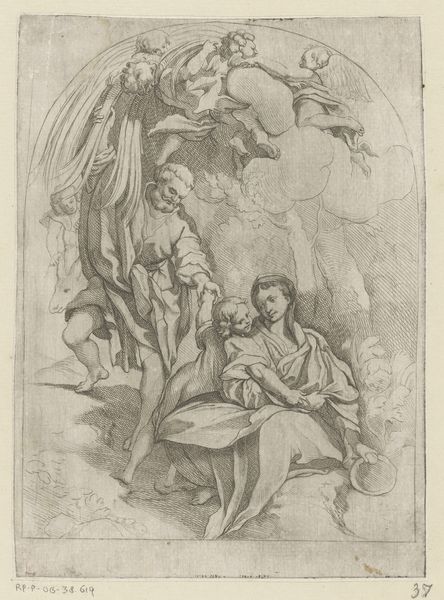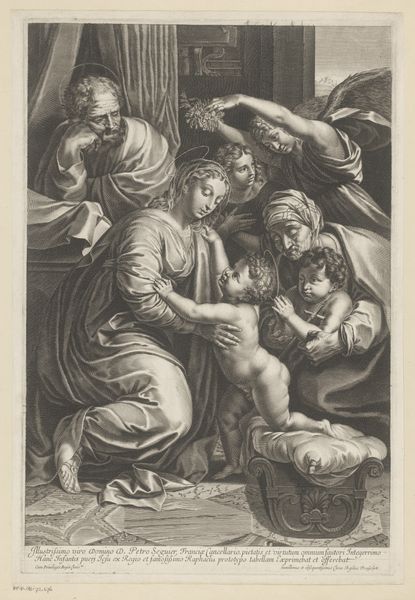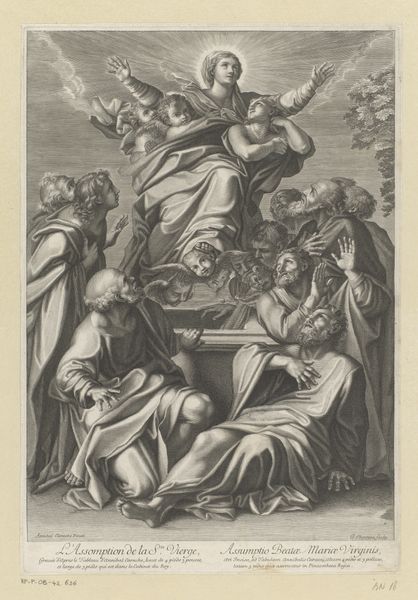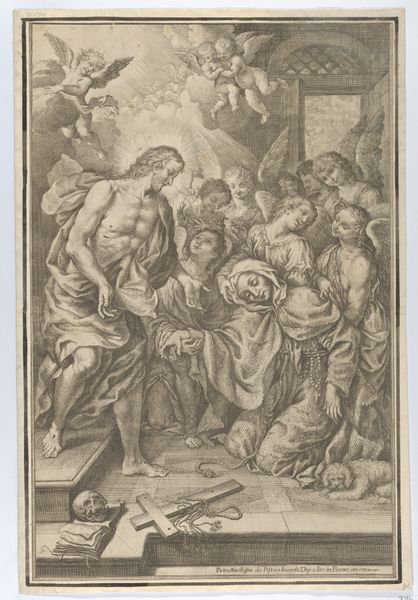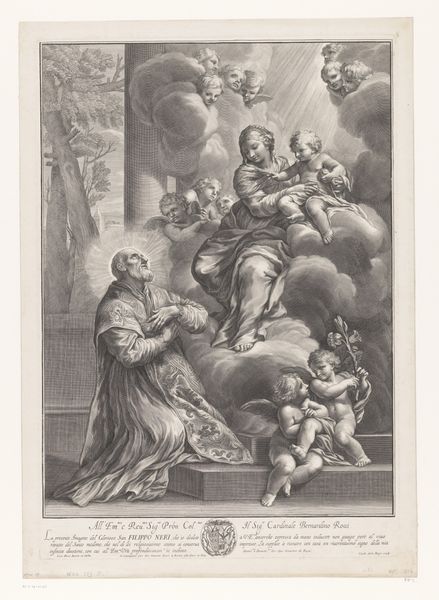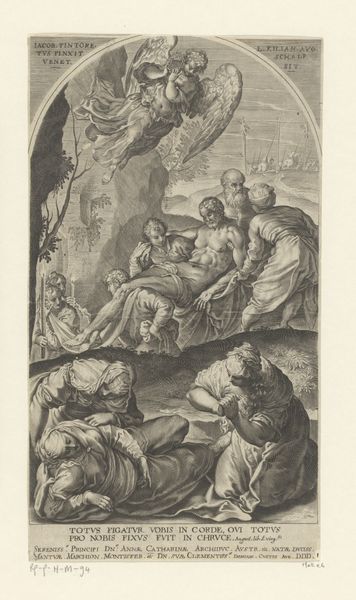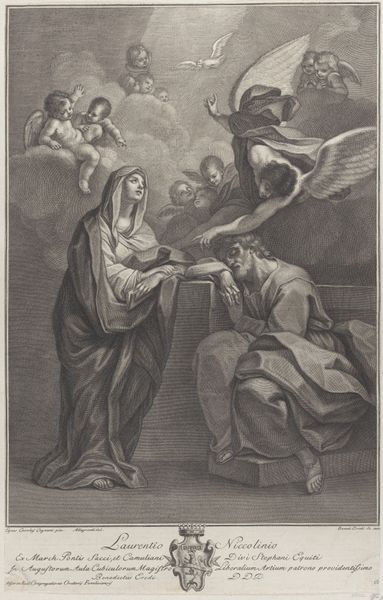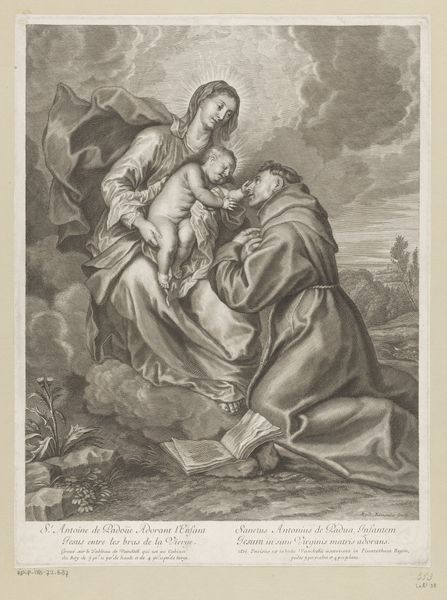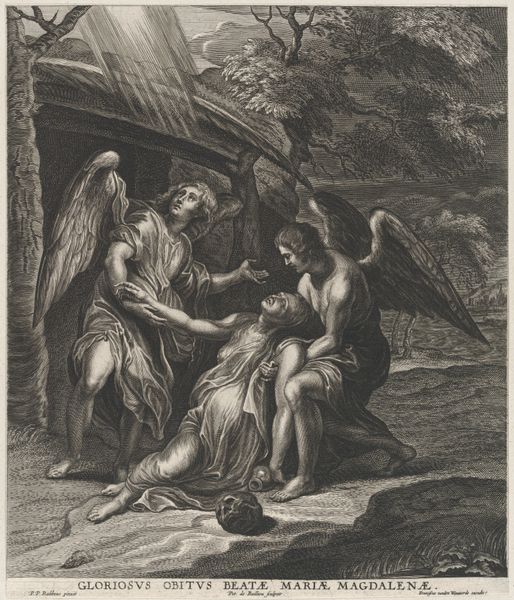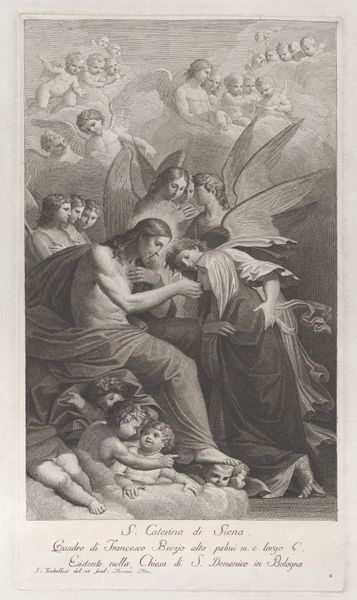
Heilige Familie met slapend kind aanbeden door engelen, boven hen dragen putti het kruis 1632 - 1693
0:00
0:00
francoisdepoilly
Rijksmuseum
engraving
#
allegory
#
baroque
#
old engraving style
#
old-timey
#
history-painting
#
engraving
Dimensions: height 449 mm, width 343 mm
Copyright: Rijks Museum: Open Domain
Editor: This is "Holy Family with Sleeping Child Adored by Angels, Above Them Putti Carry the Cross," an engraving by Francois de Poilly, made sometime between 1632 and 1693. The detail achieved in this print is just stunning! What strikes me most is the almost dreamlike quality contrasting with the very direct religious symbolism. What do you see in this piece? Curator: It’s fascinating how de Poilly weaves together the earthly and the divine, isn’t it? The Baroque style is clear here, a theatricality used to communicate powerful messages about faith and power. Consider the Holy Family: they aren’t just figures in a religious narrative, but a powerful symbol of societal ideals of family, gender roles, and the patriarchy, reinforced by the Church's dominance. Do you see any connections to the visual rhetoric of power at the time? Editor: I do. The angels and putti almost seem to be staging a performance, highlighting the power dynamic and drawing viewers into that very specific belief system and social structure. How would contemporary feminist theory apply here? Curator: Well, we can analyze the representation of Mary. She embodies a submissive and nurturing role, a construct imposed by patriarchal religious structures. We have to ask, who benefits from portraying the feminine in this way, and how does this image reinforce or challenge the existing power structures? It's more than just an artwork; it is a cultural artifact. Editor: I never thought of it that way! Thinking about the intended audience and its historical context makes this so much richer. Curator: Absolutely. By understanding these layers, we move beyond just aesthetic appreciation and engage with the work critically, unveiling its ideological underpinnings. Editor: Thank you, it certainly helps to analyze and contextualize an image like that. It goes beyond faith and reveals what that representation aimed to control.
Comments
No comments
Be the first to comment and join the conversation on the ultimate creative platform.
